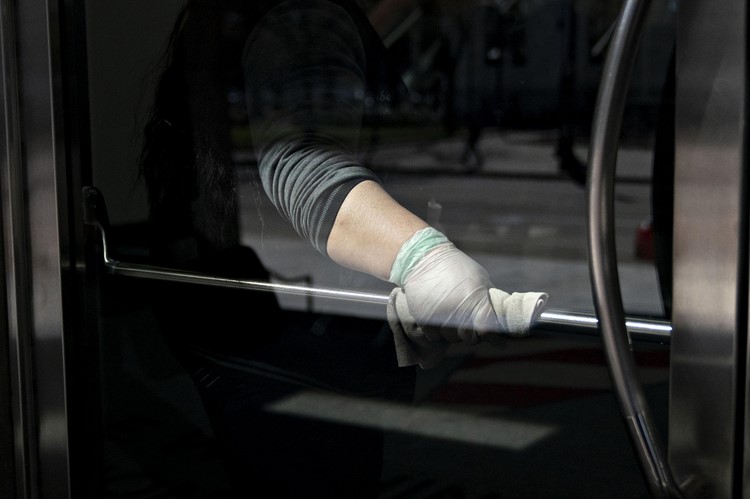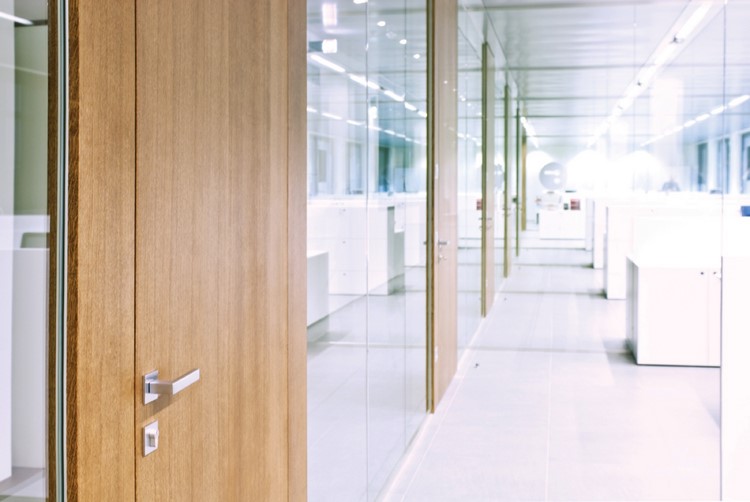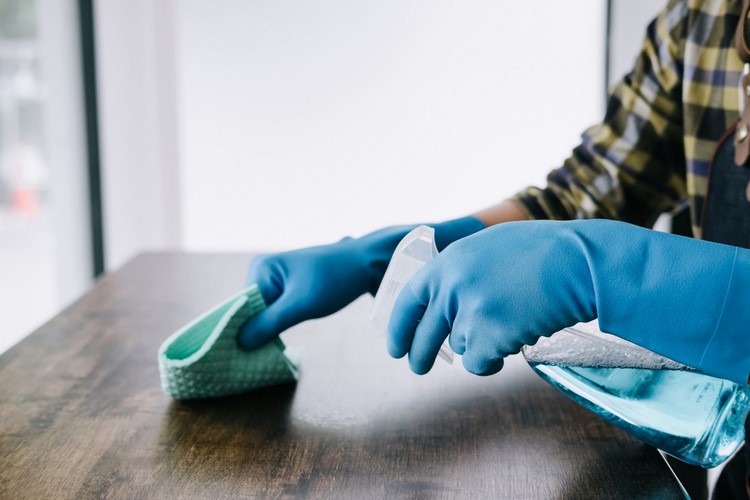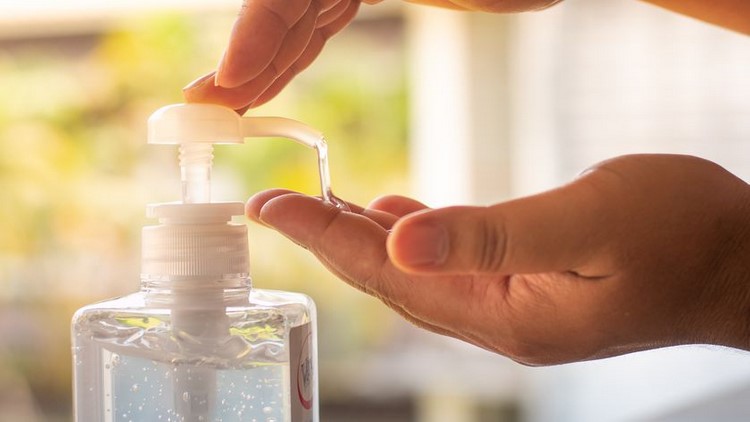This is how long the corona virus survives on different surfaces
The new corona virus is a respiratory disease, i.e. it typically spreads over the air in droplet form. When an infected person coughs or sneezes, droplets with virus particles can land or be inhaled on another person's nose or mouth.
A person can also get the coronavirus if they come into contact with a surface or an object on which there are virus particles and then touches the mouth, nose or eyes. The lifespan of the virus on a surface – a subway mast, a banister, or even money – depends on many factors, including the ambient temperature, humidity, and the type of material.

“But roughly, the coronavirus survives from a few hours to a day or so,” said Rachel Graham, an epidemiologist at the University of North Carolina.
New research from the US National Institute of Health (NIH) supports Graham's assessment. The study suggests that the virus is on Copper up to four hours, on cardboard up to 24 hours and on plastic and stainless steel up to three days can survive. The corona virus can also go up to survive three hours in the airthe study authors. However, your research still needs to be reviewed by other scientists.
How long can the corona virus survive on surfaces?

The NIH researchers compared the lifespan of the new coronavirus SARS-CoV-2 on surfaces with its relative Sars-CoV-1 – the causative agent of the SARS epidemic in 2003. They found that both coronaviruses survived the longest on stainless steel and polypropylene, a kind of plastic that is used in everything from toys to auto parts. On cardboard however, the new corona virus lasted three times longer than SARS: 24 hours compared to 8 hours.
Another German study published last week in the Journal of Hospital Infection also looked at the lifespan of other corona viruses found on different surfaces in humans. The evaluated studies, which focus on the pathogens SARS Coronavirus and MERS Coronavirus, showed, for example, that the viruses are on surfaces can remain infectious at room temperature for up to nine days. On average, they survive between four and five days. “In hospitals these can be door handles, for example, but also knobs, bedside tables, bed frames and other objects in the immediate vicinity of patients, who are often made of metal or plastic,” explains Professor Günter Kampf from the Institute for Hygiene and Environmental Medicine at the University Hospital Greifswald. “Low temperatures and high humidity further extend their lifespan,” emphasizes Kampf.
The corona virus kept at a temperature of 20 degrees Celsius two days on steel, four days on wood and glass and five days on metal, plastic and ceramics. On aluminum survived the virus two to eight hours and on latex less than eight hours.
This table shows their results depending on the material type:
| material | Survival |
|---|---|
| steel | 3 days |
| aluminum | 2 – 8 hours |
| Wood | 4 days |
| Cardboard, paper | 24 hours |
| Glass | 4 days |
| plastic | 5 days |
| Ceramics | 5 days |
| latex | <8 hours |
According to Rachel Graham, smooth, non-porous surfaces such as door handles and table tops are generally better at transmitting viruses. Porous surfaces – such as money, hair, and fabric – do not allow viruses to survive as long because the small spaces or holes in them can trap the microbe and prevent it from spreading, Graham said.
“Coins transmit a virus better than cash, but that shouldn't be a big problem,” she said. “As a rule of thumb, money should be considered dirty anyway, because that's what it is. It goes through too many hands so as not to be dirty. “
The smartphone, with all of its glass and aluminum housing, can also transmit viruses. Graham recommended disinfecting your phone, “especially if you take it to the bathroom.”
The ambient temperature makes a big difference

The study also found that higher temperatures make a difference in the lifespan of corona viruses. With an increase in temperature from 20 degrees to 30 degrees, the survival time of SARS on steel surfaces is reduced by at least half.
This is because some corona viruses, including Covid-19, have a virus envelope: a layer of fat that protects virus particles as they move from person to person in the air. However, this shell can dry out and kill the virus. So higher humidity, moderate temperatures, little wind, and a solid surface are good for the survival of a corona virus, Graham said.
This also explains why respiratory viruses are typically seasonal: cooler temperatures help harden the protective gel-like layer that surrounds the particles.
How to disinfect corona virus surfaces and objects

The authors of the Journal of Hospital Infection study found that human coronaviruses could be “efficiently inactivated” in a minute if cleaned with solutions containing 62% to 71% ethanol, 0.5% hydrogen peroxide or 0.1% Contain sodium hypochlorite.
“We expect a similar effect against the Covid-19,” she added.
Graham said these surface disinfectants could work within 15 seconds. She added: “However, to achieve the kill rates advertised on the packaging, you usually have to wait several minutes – between five and six minutes.
This duration is probably only important if you clean a surface in an area where someone is infected.

Graham said the most important thing about disinfecting a surface is to bring the potentially infectious dose of the virus below a level that causes disease.
“Most commercial products called” disinfectants “speak of a 99.9% kill rate,” she said – which will surely bring the dose below the threshold that would make people sick. But an alcohol-based hand disinfectant is not ideal for disinfecting smooth surfaces because the alcohol content is not high enough.
The hand disinfectant is said to reduce the proportion of infection on the hands “without removing all fat and moisture from the skin,” she said. “Surface disinfectants like bleach are more suitable for this.
Stop touching your face and wash your hands

Graham stressed the importance of washing your hands and not touching your face – these are the best ways to minimize the likelihood that the virus will spread to the surface and hands.
The recent study concluded that 32% of the surface virus could be transferred to the hands if a person touched a surface on which the influenza A virus lived for five seconds.
“If you're eating, putting on makeup, wanting to play with the baby, etc., wash your hands,” she said.
She also suggested washing the hair if it was sneezed on, although the virus didn't survive for very long.
Of course, the corona virus cannot infect you with your hands. To avoid infection, you never need to touch your eyes, nose, and mouth.
You can read the full study in the Journal of Hospital Infection here.
The post This is how long the coronavirus survived on different surfaces appeared first on Deavita.com | Living ideas, design, hairstyles, make-up, lifestyle, health and beauty tips.





















